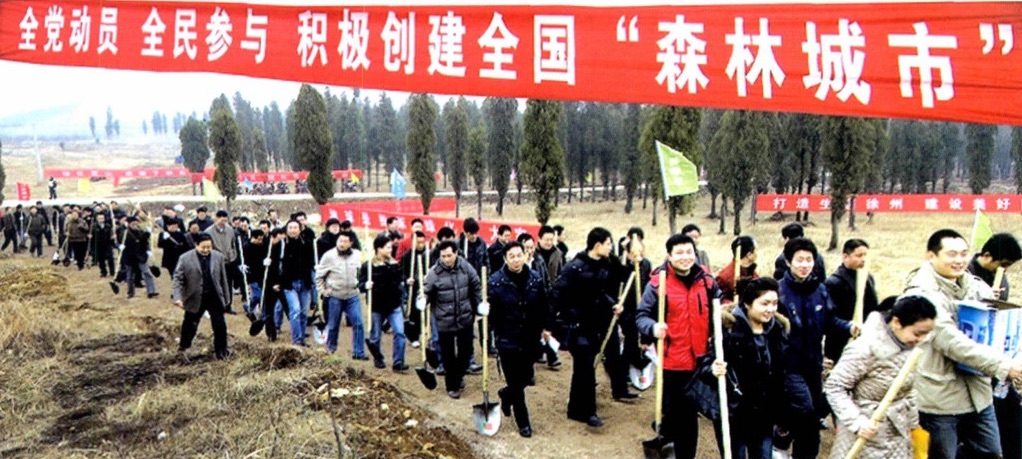A comparative approach to green space policy and planning structure
Downloads
DOI:
https://doi.org/10.7480/rius.6.96Keywords:
green infrastructure, green space, planning system, Sino-GermanAbstract
Green Infrastructure (GI) provides an important life-support system for regions and cities. Inspired by, supported by or copied from nature, GI is intended to deal with issues that traditional grey infrastructure can hardly accomplish. Initiated by the European Union’s (EU) Biodiversity Strategy, Germany was an early adopter and thus a role model for the GI approach. In particular, a systematic GI planning system composed of formal and informal planning instruments has been established and implemented from the national to the local level. In comparison, China has not yet officially issued guidance or laws for GI planning. Instead, GI implementations are mainly concentrated at the urban and local scale in the form of green municipal engineering. Scrutinizing the spatial planning system in China, however, we can identify a top-down “5+1” model as a GI planning framework. This includes five types of statutory and non-statutory planning together with the garden city movement. Germany may benefit from China’s diversified and inclusive GI development model and its efforts to promote regional transformation and enhance citizens’ sense of pride in their city. On the other hand, China can learn from Germany’s integrated GI planning system and top-level design. Due to the cross-cutting nature of the issues involved, China’s national spatial planning system must be reformed in order to improve GI planning in the country.
The aim of this paper is to compare GI planning in Germany and China, two countries at different developmental stages and with contrasting social and governmental systems. In so doing, we hope to build a “bridge” for the exchange of experiences.
How to Cite
Published
Issue
Section
License
Copyright (c) 2020 Tinghao Hu, Jiang Chang, Ralf-Uwe Syrbe

This work is licensed under a Creative Commons Attribution 4.0 International License.
References
Ahiablame, L. M., Engel, B. A., & Chaubey, I. (2012). Effectiveness of low impact development practices: Literature review and suggestions for future research. Water, Air, & Soil Pollution 223(7), 4253-4273.
Albert, C., von Haaren, C., & Galler, C. (2012). Ecosystem services – Old wine in new bottles or an incentive for German landscape planning? Naturschutz und Landschaftsplanung 44(5), 142–148.
Allin, S. (2011). A new understanding of formal land use plans in Germany. International Journal of Sustainable Society 3(4), 385–396.
Benedict, M. A., & McMahon, E. T. (2002). Green Infrastructure: Smart Conservation for the 21st Century. Renewable Resources Journal 20(3), 12-17.
Benedict, M. A., & McMahon, E. T. (2012). Green infrastructure: Linking landscapes and communities. Island press.
Blotevogel, H. H., Danielzyk, R., & Münter, A. (2014). Spatial planning in Germany. Institutional inertia and new challenges. In M. Reimer, P. Getimis, & H. H. Blotevogel, Spatial planning systems and practices in Europe. A comparative perspective on continuity and change (pp. 83–108). Routledge.
Blume, H.-P., & Sukopp, H. (1976). Ökologische Bedeutung anthropogener Bodenveränderungen.Schr.-R. f Vegetationskunde 10, 75–89.
Bundeministerium für Umwelt, Naturschutz, Bau und Reaktorsicherheit. (2015). Grün in der Stadt für eine lebenswerte Zukunft. BMUB.
Byrne, J. A., Lo, A. Y., Jianjun, Y. (2015). Residents’ understanding of the role of green infrastructure for climate change adaptation in Hangzhou, China. Landscape and Urban Planning 138, 132-143.
Canzonieri, C. (2007). ME Benedict and ET McMahon. Green Infrastructure: Linking Landscapes and Communities 22(5), 797-798.
Chang, J., Hu, T., Liu, X., & Ren, X. (2018). Construction of green infrastructure in coal-resource based city: A case study in Xuzhou urban area. International Journal of Coal Science & Technology 5(1), 92-104.
Dhakal, K. P., & Chevalier, L. R. (2017). Managing urban stormwater for urban sustainability: Barriers and policy solutions for green infrastructure application. Journal of environmental management 203, 171-181.
European Commission. (2008, December). Natura 2000 - Protecting Europe’s biodiversity. European Commission.
European Commission. (2011, March). EU biodiversity strategy to 2020. European Commission.
European Commission. (2013, November). Building a green infrastructure for Europe. European Commission.
European Commission (2015). Towards an EU Research and Innovation policy agenda for nature-based solutions & re-naturing cities. Final report of the Horizon 2020 expert group on ‘nature-based solutions and re-naturing cities’. European Commission.
Fábos, J. G., & Ryan, R. L. (2004). International greenway planning: An introduction. Landscape and urban planning 2(68), 143-146.
Federal Agency for Nature Conservation. (2017, March). Federal Green Infrastructure Concept. Federal Agency for Nature Conservation, Bonn.
Grunewald, K., Hu, T., Kümper-Schlake, L., Wei, H., & Xu, Q. (2018). Towards ‘Green Cities’—Fields of action and recommendations. In K. Grunewald, J. Li, G. Xie, & L. Kümper-Schlake (Eds.), Towards green cities: Urban biodiversity and ecosystem services in China and Germany (pp. 175-197). Springer International Publishing (Cities and nature).
Haase, D., Larondelle, N., Andersson, E., Artmann, M., Borgström, S., Breuste, J., Gomez-Baggethun, E., Gren, Å., Hamstead, Z., Hansen, R., Kabisch, N., Kremer, P., Langemeyer, J., Rall, E. L., McPhearson, T., Pauleit, S., Qureshi, S., Schwarz, N., Voigt, A., Wurster, D., & Elmqvist, T. (2014). A quantitative review of urban ecosystem service assessments: Concepts, models, and interpretation. Ambio 43 (4), 413-433.
Hansen, R., & Pauleit, S. (2014). From multifunctionality to multiple ecosystem services? A conceptual framework for multifunctionality in green infrastructure planning for urban areas. Ambio 43(4), 516-529.




